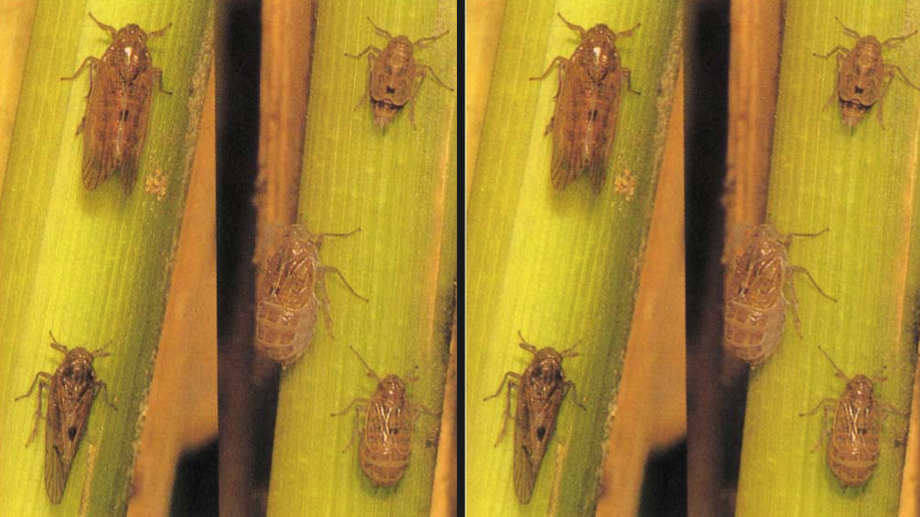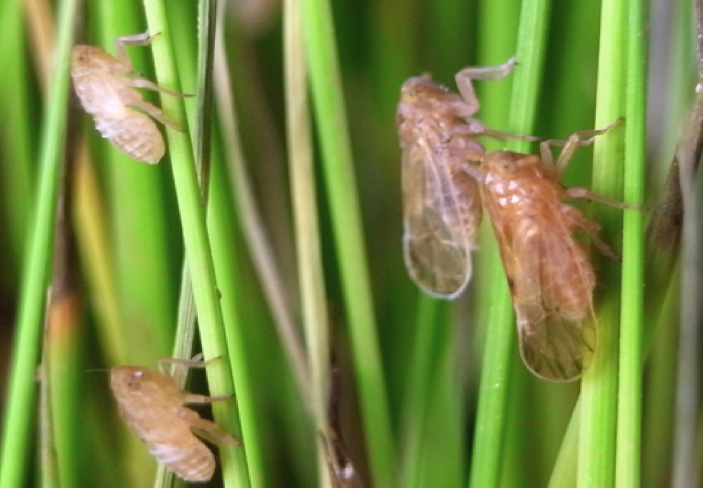Brown planthopper (BPH, Nilaparvata lugens) is the most important insect pest of rice that decreases rice yield by direct feeding on rice or virus transmission of rice diseases. While insecticides and host-plant resistance to BPH have been used for controlling this insect pest, emergence of new populations that developed insecticide resistance or adaptation to resistant rice varieties in the fields is the critical threat for BPH management. Understanding the genetic basis and identifying responsible genes for these agriculturally important traits in BPH are necessary for future BPH management strategies.
Mapping the genes that comprise the brown planthopper genome
The first genetic linkage map for brown planthopper (BPH, Nilaparvata lugens), a major insect pest of rice, was developed. The linkage map was constructed by integrating linkage data from two backcross populations derived from three inbred BPH strains. The consensus map consists of 474 simple sequence repeats, 43 single-nucleotide polymorphisms, and 1 sequence-tagged site, for a total of 518 markers at 472 unique positions in 17 linkage groups. Inbred lines were established for three BPH strains with different genetic backgrounds (Hadano-66, Chikugo-89, Koshi-10). Two backcrossed populations were generated and used as the basal materials for developing molecular markers and genetic linkage maps. SSR (simple sequence repeat) markers and SNP (single nucleotide polymorphism) markers were designed by analyzing genomic sequences and EST (expressed sequence tags) of BPH. SSR and SNP markers that are polymorphic between inbred lines were selected and their individual genotypes in backcrossed populations were detected. Recombination values between markers were calculated to determine linkage groups and generate a genetic linkage map. The genetic linkage map and molecular markers for BPH are essential resources for genetic analyses of genes controlling agriculturally important traits of BPH, such as insecticide resistance and virulence to the resistant rice varieties.

BPH genome databases and resources
BPH genome databases and resources are essential tools in application of genome research in insect pest management. The UNKA (BPH) EST Database representing various cDNA libraries from different tissues and developmental stages has been constructed. The EST data are accessible by key words, clone names and Gene Ontology terms. The entries are also deposited in the public databases. We have also constructed a genetic linkage map for brown planthopper by integrating linkage data from two backcross populations derived from three inbred BPH strains. The consensus map consists of 474 simple sequence repeats, 43 single-nucleotide polymorphisms, and 1 sequence-tagged site, for a total of 518 markers at 472 unique positions in 17 linkage groups. Details on the genetic map and markers can be accessed via the BPH Maps and Markers Database.

Previous Page







